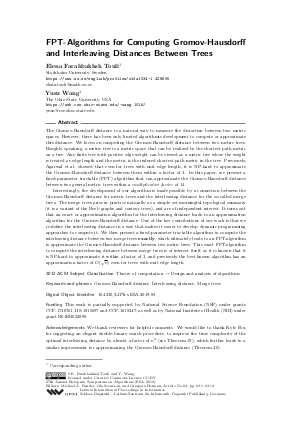LIPIcs.ESA.2019.83.pdf
- Filesize: 0.82 MB
- 14 pages

 Creative Commons Attribution 3.0 Unported license
Creative Commons Attribution 3.0 Unported license





















Feedback for Dagstuhl Publishing